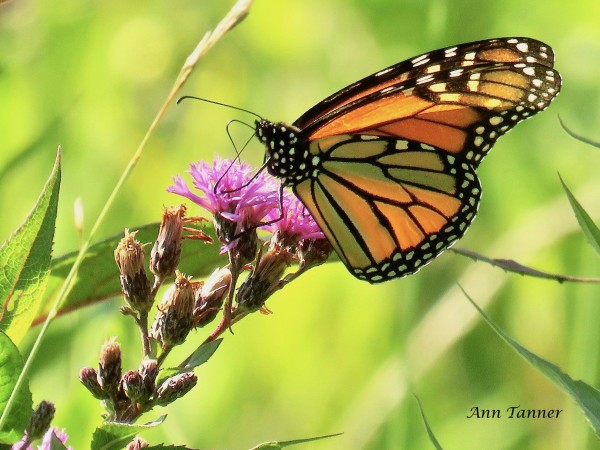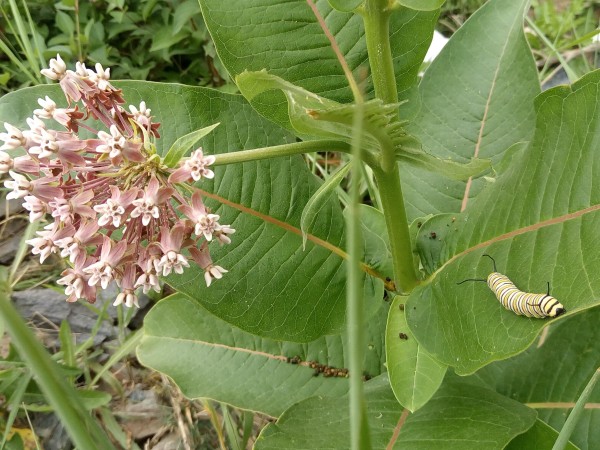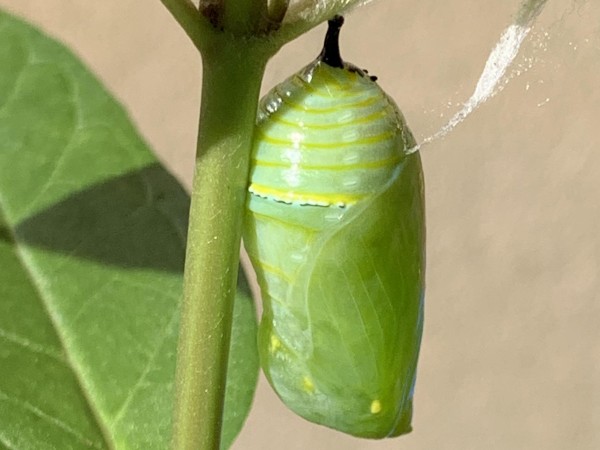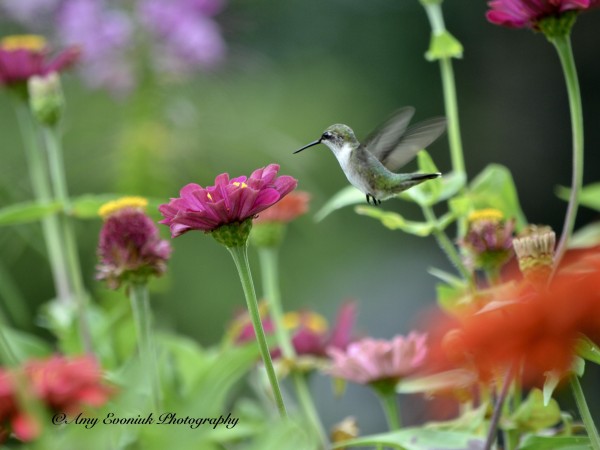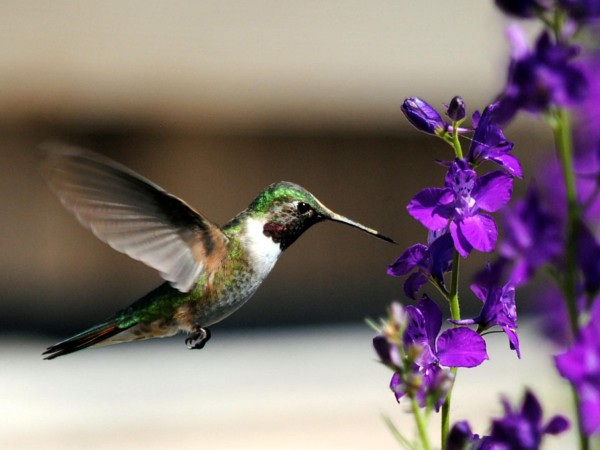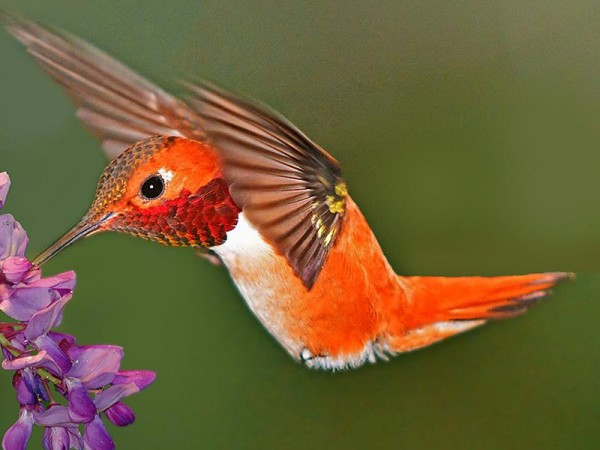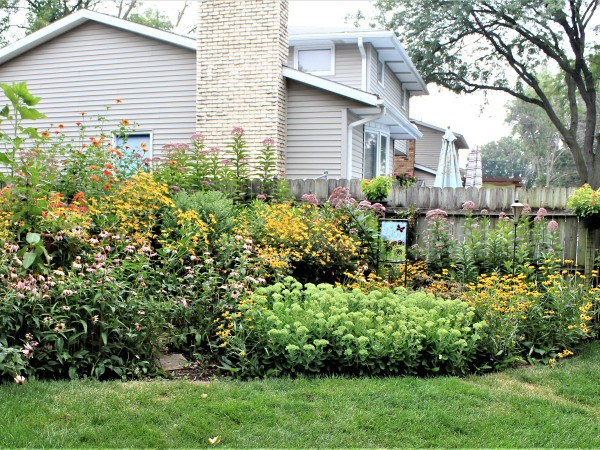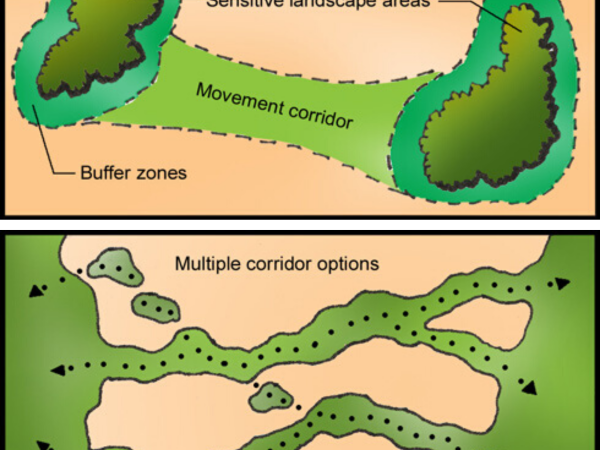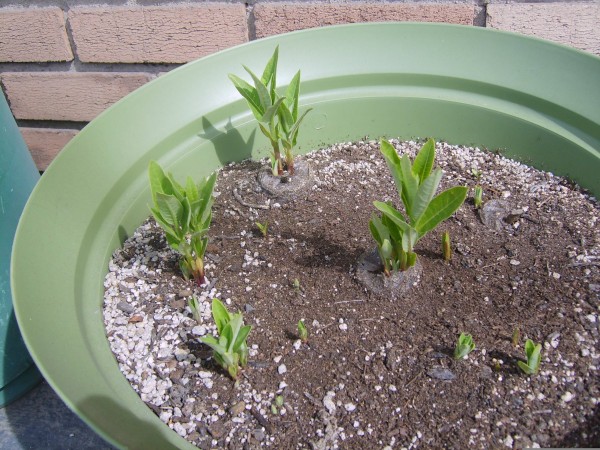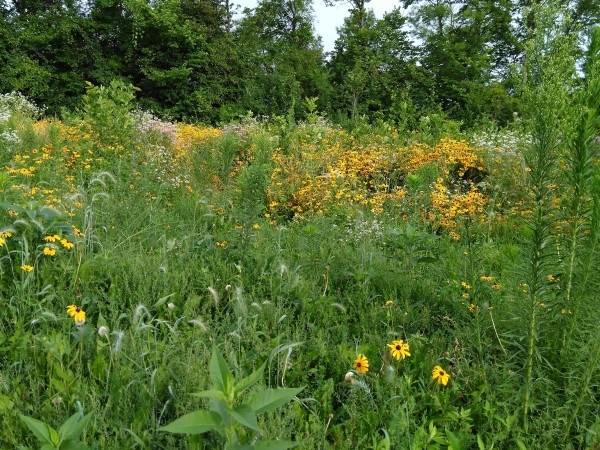Pivotal Pollinators: Small in Size, Large in Impact
“If the last pollinator species adapted to a plant is erased by pesticides, or habitat disturbance, the plant will soon follow. And as these and other populations decline or disappear, the consequences spread through the remainder of the food net, weakening other interspecific relationships.”
– E.O. Wilson
Note: ‘Pollinators’ refers to animal species that support plant reproduction by carrying pollen – genetic plant material – from plant to plant. Pollinators include insects, birds, and small mammals.
What’s the big deal about pollinators?
Why should you care about pollinators? Why do bees, butterflies, hummingbirds, and bats deserve your attention? Simply put, pollinators provide a basic need: food. Pollinators make possible an estimated one out of every three bites of food and sips of beverages. Pollinators nourish and sustain life. From fruits and vegetables to nuts, spices, chocolate, and coffee, the pollinator "delivery service" holds our collective food web together.
Pollinators keep nature in balance. More than 180,000 plant species rely on pollinators for reproduction. A decline in pollinators means a decline in plants which, in turn, has a ripple effect on all other species, including us. If you take pollinators out of the equation, the diversity found in healthy ecosystems diminishes. Healthy ecosystems provide clean air and water, nutrient-rich soils, and carbon storage to combat climate change. Less pollinators weakens the ability of ecosystems to perform these vital functions. Pollinator health is an indicator of our planet’s health.
Beyond natural systems, pollinators also boost agricultural systems. Farmers are aided by the 1,200 plus crop species dependent on pollinators. Just in the United States alone, pollinators contribute $20 billion worth of products each year. Whether it is a local vendor selling blueberries at the farmers market or a large-scale farm providing broccoli to restaurants and grocery stores, pollinators play an outsized role in agricultural production and the global supply chain.
Why the spotlight?
It is clear that pollinators are important — but, why is there a whole week dedicated to celebrating them? Unfortunately, pollinators are in trouble. Habitat loss, increased use of pesticides, ongoing climate change, and other threats are taking a toll on pollinator species across the globe. Pollinators are in decline, including two of Journey North’s cornerstone species: monarch butterflies and hummingbirds.
Monarch Butterfly – Monarch butterflies face an uncertain future. Over the past few decades, monarch numbers have plummeted. Since the 1990s, the eastern monarch population has declined by 80% and the western population by a staggering 99%. The driving factor is habitat loss. Milkweed has been hit particularly hard. Poor land management practices and the misperception of milkweed as an undesirable, weedy plant species have seen milkweed disappear throughout North America. Monarch caterpillars rely solely on milkweed to develop into butterflies. No milkweed, no monarchs.
Hummingbirds – Hummingbirds, a vibrant group of pollinators, are also at risk. Hummingbirds burn calories so quickly that they need to find nectar from hundreds – even thousands – of nectar-rich plants every day just to survive. The loss of native plant species through habitat conversion and overuse of pesticides depletes these vital food sources for hummingbirds. Climate change puts further strain on hummingbird food sources as it can disturb and alter the composition of native plant communities.
How can you help pollinators?
Just as humans depend on pollinators, pollinators are now depending on us. Here are some ways you can help:
Plant a pollinator garden
Pollinators need each of us to plant and protect habitat whether in our back yards or public spaces. These “pollinator patches” collectively create habitat corridors that provide vital resources to pollinators such as milkweed for monarchs and nectar-rich flowers for hummingbirds during migration and breeding. Creating more pollinator-friendly habitat protects other wildlife as well. Native plants work best for pollinator gardens. The Pollinator Partnership has useful resources tailored to various eco-zones across North America. Do some research to find native plants that grow well in your region. Consider eliminating pesticides or reducing the amount and using organic alternatives.
Share your monarch and hummingbird observations with Journey North
Are migratory pollinators such as monarchs and hummingbirds finding enough suitable habitat and resources? Are they being observed in their historical range? Are they arriving earlier or later than in the past? To answer these and other questions, we need as many people as possible across North America to help track pollinators. Professional scientists alone cannot gather the amount of data necessary for comprehensive analyses. Citizen science helps fill knowledge gaps. Since 1996, citizen scientists have been assisting Journey North to track and better understand the migration of monarchs and hummingbirds. With greater knowledge we can strengthen advocacy and protection measures for pollinators. Your observations matter.
Spread the word!
Greater awareness is key: securing a hopeful future for pollinators depends on a passionate, informed, and engaged public. Share the wonder and importance of pollinators with your family, friends, and elected officials. As people learn more pollinators, they become advocates – indeed voices – for the pollinators they come to love and understand. We can all play our part to secure a healthier, more sustainable future for pollinators.
Creating Pollinator Habitats
Many of you are already creating pollinator habitats — in backyards, agricultural fields, and public natural spaces; in rural areas and urban centers; and on private and public lands. Together, through all these efforts, great and small, we ensure that annual migrations continue across the North American continent. This summer is your opportunity to register your habitats with Journey North. You may think that your habitat is just one pollinator patch – but together we are creating a patchwork quilt for the species we track through Journey North. Help us to show the whole “quilt” by participating in our Pollinator Patch mapping effort.
Step #1: Take a photo of your habitat. We love to see our Journey North participants — so include yourself in the photo if you wish. Whether it is a few milkweed plants in your garden or acres of prairie at a local nature preserve, share habitat in your area that is making a difference for pollinators.
Step #2: Submit your photo with a comment describing the nectar rich plants in your habitat.
Note: Submit this report as you would a sighting using the Journey North sighting category: "Habitat Project". You must first be register with Journey North. To register, please go to our Registration page. Then you will be able to submit our photo on Sightings page.
Find out more by going to our Let's Connect for Pollinators webpage. To honor the spirit of Pollinator Week throughout summer, we will accept photo submissions through August 31, 2022.
Sources
Pollinator.org. 2020. Pollinator Week | Pollinator.Org. [online] Available at: https://www.pollinator.org/pollinator-week#pw-fastfacts
Xerces.org. 2020. Monarch Butterfly Conservation | Xerces Society. [online] Available at: https://xerces.org/monarchs
